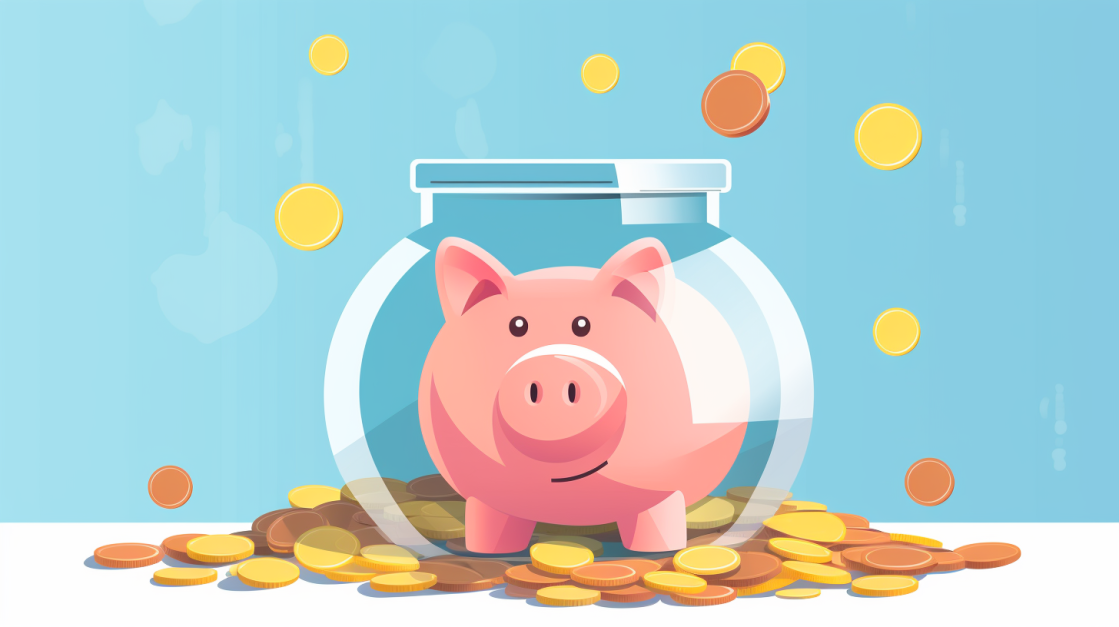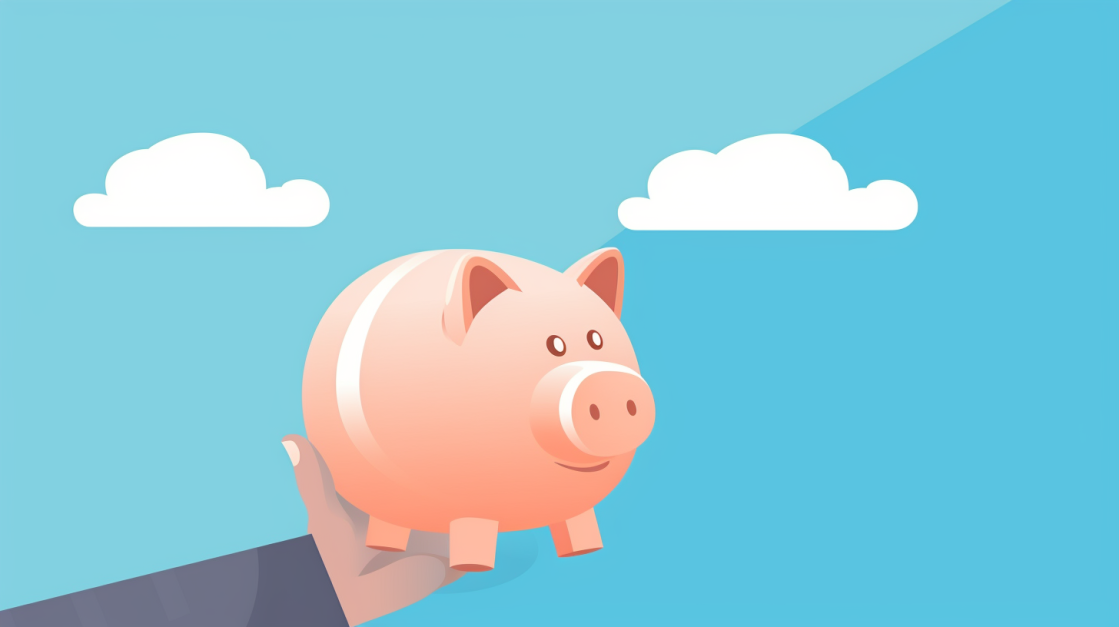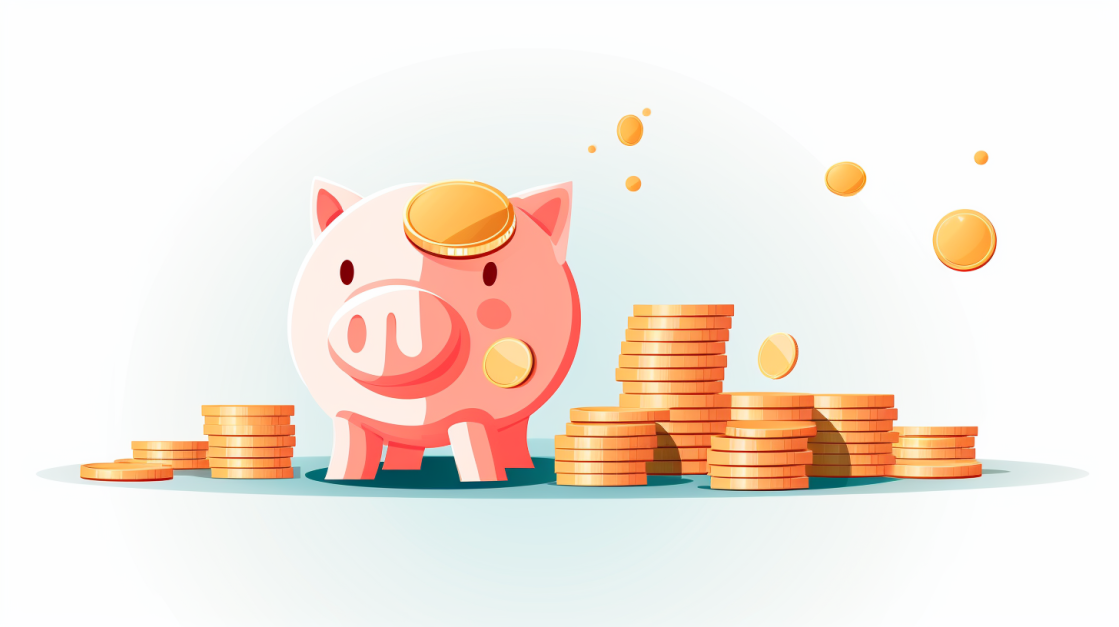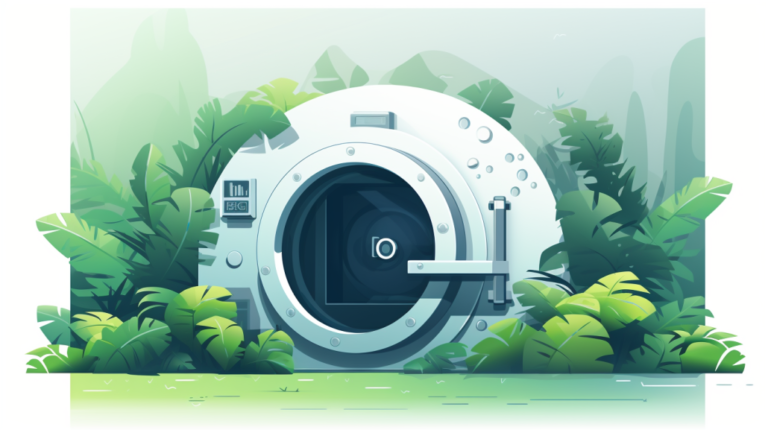High-Interest Savings Accounts: What You Need to Know

Feeling drained from your old savings account that’s barely making a dent in your earnings with its minimal interest? Trust me, I understand the struggle all too well! But after countless hours navigating through complex financial lingo, I’ve unearthed the treasure trove – High-Interest Savings Accounts.
This blog will be your guide to these fruitful financial tools, throwing light on why they surpass regular accounts and even pointing out some top contenders. Ready for a savvy money move? Let’s dive right into this adventure together then!
Key Takeaways
- High – interest savings accounts give a lot of money in return. They are great for growing your funds faster.
- Online banks usually offer the best rates for high – yield accounts. These online banks also come with FDIC or NCUA insurance up to $250,000.
- Moving money between this and your checking account is pretty quick and easy. You can easily get cash when you need it.
- When picking a bank, take note of things like fees, interest rate, starting deposit needed and how much you must always have in the account (minimum balance).
Understanding High-Interest Savings Accounts
Before we dive into the benefits of high-interest savings accounts, let’s first comprehend what these financial products are. A high-yield savings account is essentially a type of deposit account that comes with significantly higher interest rates than traditional savings accounts.
These may be offered by online-focused banks and credit unions. They provide noteworthy features which include electronic transfers, ATM cards for easy access to your funds, and FDIC or NCUA insurance up to federally approved limits.
And it all works in a pretty straightforward way – you put money into this special type of account and watch your initial deposit grow faster over time due to higher interest compounding that adds directly back into your balance! Now who wouldn’t want their hard-earned cash working even harder?.
Definition and Key Features
A High-Interest Savings Account is a type of bank account. It pays more interest than regular savings accounts. Online banks often have the best rates for these accounts. Key features include higher earnings and federal insurance protection by FDIC or NCUA up to $250,000 for each account.
Plus, you can put money in or take it out whenever you want! These accounts are great to use as an emergency fund where you keep at least three to six months’ worth of living costs safe and growing.
How High-Interest Savings Accounts Work

High-Interest Savings Accounts store your money. Here’s how they work: you put in the first deposit. Then, the bank pays you extra cash for holding on to it. This bonus is interest.
The extra money grows faster because these accounts pay more than regular savings ones do. All top high-interest savings accounts use online banking to cut costs and give you more earnings from interest rates ten times higher than normal banks offer! Online transfers between your checking account and the high-yield one can be set up easily– even if they come from different banks! Just like a plain old savings account, FDIC or NCUA federal insurance guards your saved cash up to $250,000 quite safe!
Reasons to Choose a High-Interest Savings Account
High-interest savings accounts come with several appealing benefits. Firstly, they offer increased earnings from interest – making your money work harder for you over time. These types of accounts also provide financial security, acting as a safety net that grows over time and shields against future uncertainties.
Another advantage is the accessibility and flexibility offered by these banks which ensure easy access to your deposits when need be without having to forego the high yields earned in different situations.
Increased Earnings from Interest
High-interest savings accounts pay more money. They may give you 10 to 12 times more than what regular banks do! Let’s think of this like a jar of money. If I put $5,000 in the jar and leave it for one year, a normal bank might only add about $19.50 to my jar.
That’s not much! But with high-interest savings, that same $5,000 becomes $225 after just one year. This shows how great these accounts can be for growing our money faster.
Financial Security
Lots of cash in a bank is safe. High-interest savings accounts add more safety to your money. Banks that have these accounts are part of the FDIC or NCUA. They give insurance for up to $250,000 per account if anything goes wrong with the bank.
This means all your savings are safe and wood boost your peace of mind about money matters.
Accessibility and Flexibility
You can use a high-yield savings account at any time. Electronic transfers let you move money between this and your checking account with ease. You can even do it if the accounts are in different banks! Such transfer gives quick access to your funds.
Having such an account also provides flexibility. You’re not stuck having all your cash in one space, which is great for saving plans or emergency funds. For example, keep living costs for up to six months housed here just case of an unexpected issue – that’s smart planning!
Comparing High-Yield Savings Account and Traditional Savings Account

It’s crucial to understand the core differences between a high-yield savings account and a traditional savings account. These two types of accounts offer different benefits, and it’s essential to choose the one that best suits your financial needs and goals.
| High-Yield Savings Account | Traditional Savings Account | |
|---|---|---|
| Interest Rate | High-yield savings accounts pay up to 10 to 12 times the national average of a standard savings account. | Traditional savings accounts have lower interest rates. |
| Earnings | The difference in interest between high-yield savings account rates and the national average can be significant. For instance, holding $5,000 in a high-yield savings account at a 4.5% rate would earn you $225 in interest over a year. | Holding the same $5,000 in a traditional savings account with a national average rate of 0.39% APY would earn you only $19.50 over a year. |
| Accessibility | Electronic transfers are easy to set up between a high-yield savings account and your checking account, even if you hold them at different banks. | May offer both online and offline access, but typically with lesser electronic transfer capabilities compared to high-yield accounts. |
| Best For | Optimal for storing an emergency fund, with at least three to six months’ worth of living expenses. | Best for individuals with lower balances and less need for high interest earnings. |
| Safety | The federal insurance provided by the FDIC protects deposits in high-yield savings accounts up to $250,000. | Also FDIC-insured, offering the same level of safety for your deposited money. |
When choosing between a high-yield savings account and a traditional savings account, consider your financial needs, the amount of money you plan to save, and your comfort level with online banking.
Highlighting Top High-Interest Savings Accounts
Let’s dive into some of the top high-interest savings accounts from well-known lenders like Discover Bank, Varo, and Bask Bank. These offer attractive rates for helping your money grow faster; curious to know more about it? Keep reading!
Discover Bank
Discover Bank is a top choice for high-interest savings accounts. You can earn more cash with their good interest rates. This online bank makes your funds work harder for you! It is easy to use, too.
They offer free tools and guides to help you manage your money. Also, all the reports there are fair and true. You’ll love saving with Discover Bank!
Varo

Varo is an excellent choice for high-interest savings. They offer rates higher than many other banks. This means your money grows fast! It’s easy to open an account with Varo, and there are no fees to worry about.
Also, you can use the Varo app to handle your banking needs. The app makes it simple to manage your money from anywhere at any time. So if you want a good place to store and grow your savings, think about Varo!
Bask Bank
Bask Bank is a special place for your money. They have high-interest savings accounts that can make you more money. The annual percentage yields (APYs) go up to 5% or more. These numbers are fresh from September 15, 2023.
Bask Bank helps you choose the best account with their clear advice and free tools. Their aim is to make banking as easy as possible for you, so they give unbiased help based on facts only.
Factors to Consider When Choosing a High-Interest Savings Account
When selecting a high-interest savings account, consider crucial factors like interest rate, initial deposit requirement, minimum balance stipulation, and any fees. You should also look into the access to funds – assess whether you can easily withdraw or deposit money when needed? Lastly, it’s critical to understand the compounding method used by your chosen bank in order to maximize your earnings.
Interest Rate
The interest rate is a big part of high-interest savings accounts. It shows how much money you can earn from what you save. The best rates come from online banks, typically higher than traditional ones.
Rates can change fast, so it’s important to look at them regularly.
Required Initial Deposit
Banks may want some money to start a high-yield savings account. This is the “required initial deposit“. Each bank has its own rules about this. Some banks ask for a lot of money at first, others don’t need any.
Go online or call the bank to find out their rule.
This starting amount can change the way you save. If you do not have enough money now, look for a bank that doesn’t need much right away. Your aim should be making your savings grow.
Minimum Balance Required
In some banks, you need to keep a set amount of money in your account. This is the “minimum balance“. With high-interest savings accounts, this might be higher than regular bank accounts.
Online-only banks may waive fees if you meet this minimum balance. Be sure to check what this amount is before opening an account. If it’s too high, look at other choices. It’s crucial not to fall below the minimum or else you might have to pay a fee!
Fees
Some banks have fees for their high-interest savings accounts. Others may not ask you to pay a fee if you keep a certain amount of money in your account. I need to look out for these costs when picking the best account for me.
Not wanting any hidden surprises, it’s important that I know and understand all the possible charges linked with my chosen bank account.
Access to Funds
The money in a high-yield savings account is always yours to use. How fast you can get it varies from bank to bank. Most provide ATM cards for quick cash withdrawals. Some even send checks or do wire transfers if needed.
Setting up electronic moves between this and your checking account is simple too, even at different banks! This way, you get access to your money when you need it most.
Deposit Options
There are different ways to add money to high-interest savings accounts. You can do it through electronic transfers. This method lets you move funds from your checking account to your savings account easily.
Most banks and apps offer this feature.
Another way is with a direct deposit from your job or other sources of income. Some banks also allow checks mailed in for deposits, but this may take longer than the other options.
Smaller online banks and apps often ask for less money when you start an account too.
Compounding Method
The compounding method is a good part of a high-yield savings account. It adds up the interest over time. This makes your money grow faster than if it sat in a regular savings account.
The bank does this by putting back all earned interest into your account. Since I started using the compounding method, my savings have gone up more than before!
How to Open a High-Interest Savings Account
Opening a high-interest savings account involves doing some research on different banks and accounts, understanding their unique features, and following the bank’s specific opening process.
Find out more about how to get started with your own high-interest savings account in this detailed section. Read further to learn how you can start earning more from your savings today!
Researching Different Banks and Accounts
First off, let’s talk about how to pick the right bank and account. You’ll want to check out different banks online. Online banks often have high rates for savings accounts. Look at their sites and see what you like.
Think about where your money will be safe and grow the most. The FDIC and NCUA give insurance up to $250,000 per account, so that’s one less thing to stress about! Be sure also to compare fees, deposit options, and interest rates before settling on a choice.
Understanding the Opening Process

First, you need to pick a bank and account that suits you. You’ll need some personal info to get things set up. This could include your Social Security number and other bits of key info.
With online banks, every part of this process happens on the internet.
Next comes moving over some money to start the account off. Sometimes, there’s no need for any cash at first. Some banks might ask for a lot though! It all depends on the bank you choose to go with.
The easiest way is often through an electronic transfer from another account.
The Safety of High-Interest Savings Accounts
Rest assured, high-interest savings accounts are reliably secure due to FDIC insurance that safeguards your money. But it’s crucial we peel back the layers and delve deeper into assessing any potential risks – an exploration you surely don’t want to miss!
Understanding FDIC Insurance
FDIC insurance keeps your money safe. It is like a safety net for your savings account. If a bank fails, this federal insurance steps in to help out. FDIC covers up to $250,000 per account so you don’t lose your money due to the bank’s problems.
The United States government backs FDIC insurance which adds another layer of security for your high-yield savings accounts.
Assessing the Risks
There can be risks with high-interest savings accounts. The main one is that rates often change. Rates may drop after you open the account. Another risk is not being able to get your money fast.
Some online banks may take a few days for this. But worry not, your money in these accounts is safe up to $250,000 by federal insurance from FDIC and NCUA.
Best Uses for a High-Interest Savings Account
With a high-interest savings account, you can effortlessly grow your money for large expenses, educational needs, or even that dream vacation – and the best part? You’ll learn all about how to make it work for your financial goals in our next section.
Stay tuned!
Saving for Large Expenses
Big expenses need big money. A high-yield savings account is a good place to save for this. This could include cash for a home, repairs on that home, or even your dream car. It’s also perfect if you’re planning a nice wedding soon.
The higher interest rate helps add more money to your goal each day than the old school saving ways. For example, with $5,000 at stake and an interest of 4.5%, you gain $225 in one year! Insurance from the federal government holds safe up to $250,000 in your account too.
Educational Savings
In the world of savings, a high-yield account shines for schooling costs. It is perfect for money set aside for school or college fees. These accounts pay more than regular ones do.
This means your school funds grow quicker in them. Online banks, credit unions and traditional banks all offer good options to compare. Keep an eye on alternatives too like cash management accounts or CDs! But remember, no matter where you save it, every dollar counts toward a bright future in education!
Vacation Funds

I love using my high-yield savings account for saving up vacation money. I set a little bit aside each month, letting it grow with the interest rate. Do you know that if you have $5,000 in your account and your bank gives you 4.5% interest, by the end of the year you’ll get an extra $225? That could be two nights at a lovely hotel! By doing this, not only do I enjoy great trips but also keep three to six months’ worth of living costs safe just in case.
Go ahead – open a high-yield savings account and make those dream vacations come true!
High-Interest Savings Account Alternatives
Beyond high-interest savings accounts, there are other options like Money Market Accounts and Certificates of Deposits (CDs), which can offer more flexibility or higher yields for your money.
Money Market Accounts
Money market accounts are like other savings options. They can be a choice when looking for high-interest accounts. These types of accounts often have good rates. They also come with check-writing and debit card features.
This makes them flexible, like checking accounts, while still earning interest! Yet, they need more money to open than regular savings do. It’s important to think about this before opening one.
Certificates of Deposit (CDs)
CDs are like high-interest savings accounts. You can get more return with a CD than a normal savings account. They stay for a fixed time, from months to some years. The longer they wait there, the more money you make from them! But you need to keep aside some money to start with CDs.
Checking Accounts
Checking accounts can be a friend to your high-interest savings account. They let you pay for things day-to-day like food and clothes. You may think these two kinds are different, but they work together well! From my own experience, having both is handy.
My checking account allows me to access cash easily while my high-yield savings account makes money off the funds I keep long-term. I also enjoy the ease in moving money between the two accounts when needed.
Understanding the Pros and Cons of High-Interest Savings Accounts
When it comes to financial planning, high-interest savings accounts can be a useful tool, but like any financial product, they have both advantages and disadvantages. It’s essential to understand these pros and cons before deciding if this type of account is right for you.
| Pros | Cons |
|---|---|
| The interest rates on high-yield savings accounts can be 10 to 12 times higher than traditional savings account returns, meaning you’ll earn more from your savings. | High-yield savings accounts often come with requirements, such as a minimum balance or regular deposits, which might not be feasible for everyone. |
| Funds in high-yield savings accounts are protected by the FDIC or NCUA up to $250,000, ensuring the safety of your investment. | Some high-yield savings accounts charge maintenance fees which could eat into your interest earnings if you’re not careful. |
| High-yield savings accounts can easily be linked to your checking account for easy transfers and accessibility. | The highest interest rates are usually offered by online banks, which might not suit those who prefer face-to-face banking. |
| Using a high-yield savings account as an emergency fund can provide financial security, with the ability to deposit several months’ worth of living expenses. | Interest rates on high-yield savings accounts can change. This means your earnings might not be as consistent as with other savings options. |
In weighing these pros and cons, it’s important to consider your personal financial goals, lifestyle, and comfort with online banking. A high-interest savings account can be a fantastic tool for growing your savings, but make sure it’s the right fit for you.
FAQs about High-Interest Savings Accounts
High-Interest Savings Accounts lead to many questions. Let’s handle some of them.
“Do my savings grow fast?” Yes, they do! High-yield savings accounts give 10 to 12 times more interest than plain ones. “Will it be hard for me to get my money?” No worries there. You can move cash between your high-yield account and any checking account with ease.
“Is my money safe?” Absolutely! The FDIC and the NCUA make sure you won’t lose up to $250,000 in your account!
Are all banks the same? Not really. Online banks often have better rates than others out there—keep an eye on that when choosing where to save!
Remember: smart decisions today mean a happier tomorrow with much more earned from saving wisely!
Conclusion: Are High-Interest Savings Accounts Worth It?

High-interest savings accounts are truly a win. They give more money back to you than other savings options. Don’t wait, start saving smarter today with a high-interest savings account.
It’s your money, make it work for you!
FAQs
1. What is a high-interest savings account?
A high-interest savings account is a bank product that gives you more return – the APY or Annual Percentage Yield – on your money than regular accounts.
2. Are these high-yield savings accounts safe?
Yes, funds in such accounts are often federally insured by organizations like the Federal Deposit Insurance Corp (FDIC) or the National Credit Union Association (NCUA).
3. How can I open this type of account?
To open a high-yield account, you need your personal bank information and to meet any initial deposit requirements set by the bank.
4. Are there any fees with these accounts?
Some banks might ask for minimum balance amounts to avoid monthly banking fees while others may offer no-fee options too!
5. Can I withdraw from my high-interest savings account anytime?
You can make a savings account withdrawal according to Regulation D rules but it’s best not saved for short-term goals because of certain limits.
6. Where can one find good deals on High-Interest Savings Accounts?
Websites like Bankrate.com, CreditCards.com, DepositAccounts.com and RateSeeker have updates about different national banks and their product offers.






